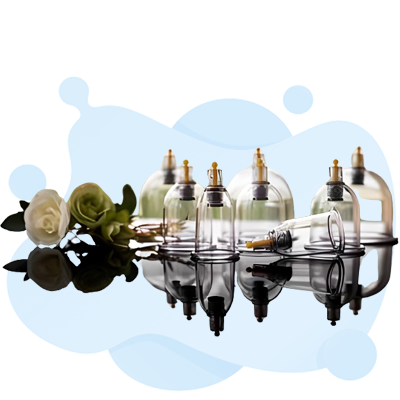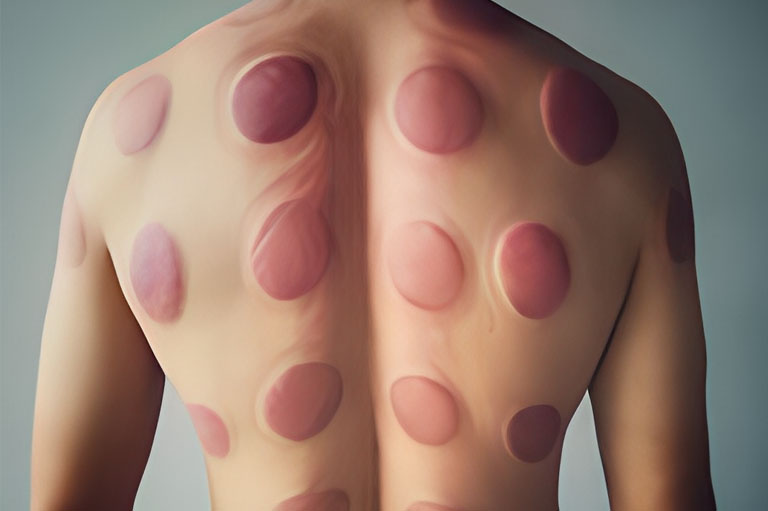Best Cupping Therapy 2024

Are you tired of conventional treatments and seeking a holistic approach to wellness? Look no further than the ancient practice of cupping therapy. In this article, we delve into the world of Best Cupping Therapy and explore its intriguing history, modern applications, and potential health benefits. From traditional Chinese medicine to modern celebrity endorsements, cupping has gained popularity as a natural remedy for various ailments. Whether you’re curious about those mysterious circular marks on athletes or eager to alleviate chronic pain, join us on a journey through the best that cupping therapy has to offer. Get ready to discover how this centuries-old technique may just be the rejuvenating treatment you’ve been searching for.
Free Cupping Therapy Practice Test Online
Cupping Therapy Marks
Cupping therapy marks, often seen as circular bruises on the skin, have sparked curiosity and conversation among those new to the practice. While some may view these marks as an unpleasant side effect, they actually hold a wealth of information about the body’s energy and circulation. In traditional Chinese medicine, these marks are regarded as a positive sign indicating that stagnant blood or energy has been released from the body, promoting better flow and overall wellness. Instead of being discouraged by these marks, individuals should embrace them as visual evidence of the treatment’s effectiveness in bringing balance to their bodies.
Moreover, cupping therapy marks can serve as a form of communication between the client and therapist, allowing for a deeper understanding of what areas require more attention or where additional healing is needed. Rather than seeing them simply as unsightly imprints on the skin, these marks provide valuable feedback that enhances both the therapeutic experience and overall health outcomes. Embracing cupping therapy marks can lead to a shift in perspective – from mere discoloration to meaningful indicators of progress and positive change within one’s physical well-being.
Types of Cupping Therapy
Cupping therapy comes in various forms, each offering unique benefits. The most common type is dry cupping, which involves creating a vacuum inside the cups to pull the skin and superficial muscles upward. This method is effective for releasing tension and improving blood circulation. On the other hand, wet cupping involves making small incisions on the skin before applying the cups to draw out toxins and impurities from within.
Another lesser-known form is fire cupping, where a flame consumes oxygen from inside a glass cup before it’s quickly placed on the skin to create suction. This technique is believed to stimulate energy flow and promote healing in traditional Chinese medicine. Additionally, there’s also movable cupping that employs massage oil or cream to glide the cups across larger body areas, providing a deep tissue massage effect alongside the benefits of traditional cupping therapy.

Cupping Therapy while Pregnant
Cupping therapy, a traditional Chinese medicine practice, has gained popularity for its potential benefits in promoting relaxation and alleviating muscle tension. However, when it comes to cupping therapy during pregnancy, there are mixed opinions within the medical community. Some practitioners caution against the use of cupping therapy while pregnant due to concerns about potential complications or triggering contractions. On the other hand, some women have reported finding relief from pregnancy-related discomforts such as back pain and swelling through gentle cupping sessions.
It is essential for pregnant women to consult with their healthcare provider before considering cupping therapy to ensure that it is safe and appropriate for their individual circumstances. Additionally, seeking out experienced and certified practitioners who specialize in prenatal cupping can offer valuable guidance and support throughout the process. As with any alternative therapy during pregnancy, weighing the possible risks and benefits is crucial in making an informed decision that prioritizes both maternal health and fetal well-being.
Cupping Therapy at Home
Cupping therapy, traditionally performed by trained practitioners, has gained popularity as a home remedy for many health enthusiasts. The convenience of self-administering cupping therapy at home offers freedom and privacy for individuals seeking relief from muscular tension, pain, and stress. With the accessibility of cupping sets available online, more people can explore this ancient healing practice from the comfort of their own homes.
However, it is crucial for individuals to educate themselves on proper techniques and safety precautions before attempting cupping therapy at home. While self-administration allows for flexibility in scheduling sessions, beginners should exercise caution to prevent any potential skin irritation or bruising. Additionally, creating a relaxed and comfortable environment conducive to healing is essential when practicing cupping therapy at home.
Cupping Therapy Athletes
Cupping therapy has gained increasing popularity among athletes due to its potential to enhance performance and aid in recovery. By applying suction cups to the skin, this ancient practice is believed to stimulate blood flow, alleviate muscle tension, and promote healing. For athletes, cupping therapy offers a non-invasive method of pain relief and muscle restoration, making it an attractive option for optimizing physical performance.
One key benefit of cupping therapy for athletes is its ability to target specific areas of the body that are subject to repetitive stress or injury. Whether it’s relieving tightness in the shoulders from overhead movements in volleyball or alleviating hamstring strain in sprinters, cupping therapy can provide localized relief that complements traditional forms of sports massage. Additionally, some athletes have reported improved range of motion and flexibility following cupping sessions, which can contribute to more efficient movement patterns and reduced risk of injury during training and competition.

Cupping Therapy for Cellulite Before and After
Cupping therapy has gained popularity as a potential treatment for cellulite, with many people claiming to see significant improvement in the appearance of their skin after undergoing this ancient practice. The technique involves placing cups on the skin to create suction and increase blood flow, which is believed to help break down the fat deposits that contribute to cellulite. Before trying cupping therapy for cellulite, it’s crucial to manage expectations and understand that individual results may vary. While some individuals have reported visible reduction in cellulite after regular cupping sessions, others may not experience the same dramatic before-and-after transformation.
It’s important to note that cupping therapy should be viewed as part of a holistic approach to addressing cellulite, including proper nutrition, exercise, and overall lifestyle choices. As with any wellness treatment, it’s essential to consult with a qualified healthcare professional before embarking on cupping therapy for cellulite. Additionally, maintaining realistic expectations about the potential outcomes of this practice is key in assessing its effectiveness for addressing cellulite concerns.
Physical Therapy and Cupping
Physical therapy and cupping have emerged as a powerful combination for treating various musculoskeletal issues. While physical therapy focuses on rehabilitative exercises and manual techniques to improve mobility and function, cupping therapy complements these efforts by providing targeted suction to release tension, increase blood flow, and promote tissue healing. By incorporating cupping into physical therapy sessions, practitioners can effectively address deep-seated muscle tightness, reduce pain, and enhance overall treatment outcomes.
What makes the integration of physical therapy and cupping particularly intriguing is the potential for synergistic effects. Cupping not only helps to alleviate specific areas of muscle tension but also creates an opportunity for deeper engagement with physical therapy exercises. The localized improvement in circulation facilitated by cupping can lead to enhanced flexibility and reduced stiffness in the treated areas. As a result, patients may experience accelerated progress in their rehabilitation journey when physical therapy incorporates targeted cupping interventions.
Cupping Therapy Detoxification
Cupping therapy has long been utilized as a form of detoxification, drawing out toxins and impurities from the body through the suction of specially designed cups. This ancient practice is believed to stimulate circulation and promote the release of built-up metabolic waste, revitalizing the body’s natural detoxification processes. By targeting specific areas of tension or congestion, cupping therapy can effectively assist in eliminating harmful substances that may be lingering in the body, ultimately supporting overall wellness.
What sets cupping therapy apart from other detox methods is its ability to address deep-seated toxicity within muscle tissues and promote lymphatic drainage. The negative pressure created by cupping encourages cellular debris and stagnant fluid to be drawn to the surface, where it can then be efficiently processed and eliminated by the body. As part of a comprehensive approach to detoxification, incorporating cupping therapy into a wellness routine may offer unique benefits for those seeking a holistic method to cleanse and rejuvenate both mind and body.